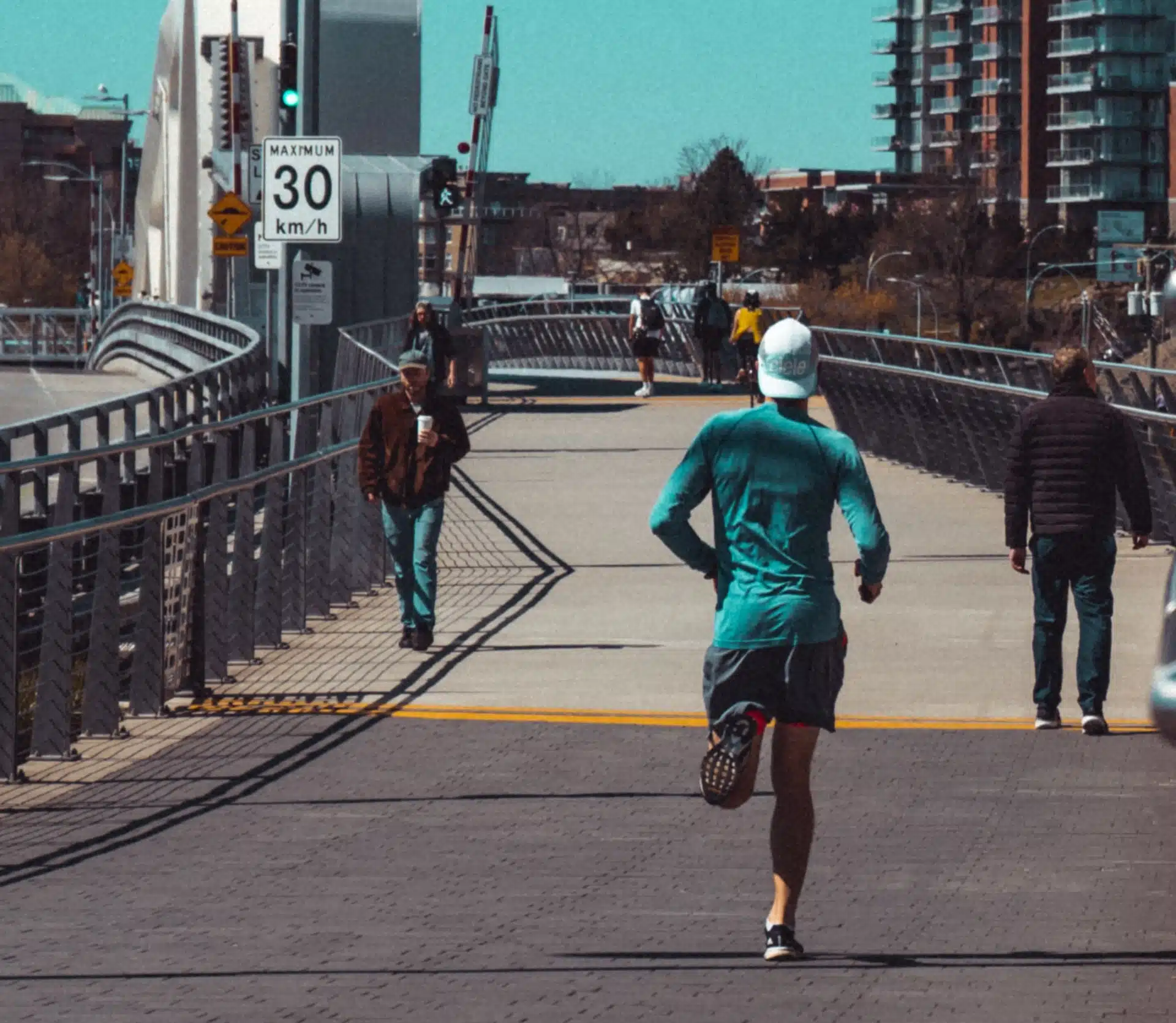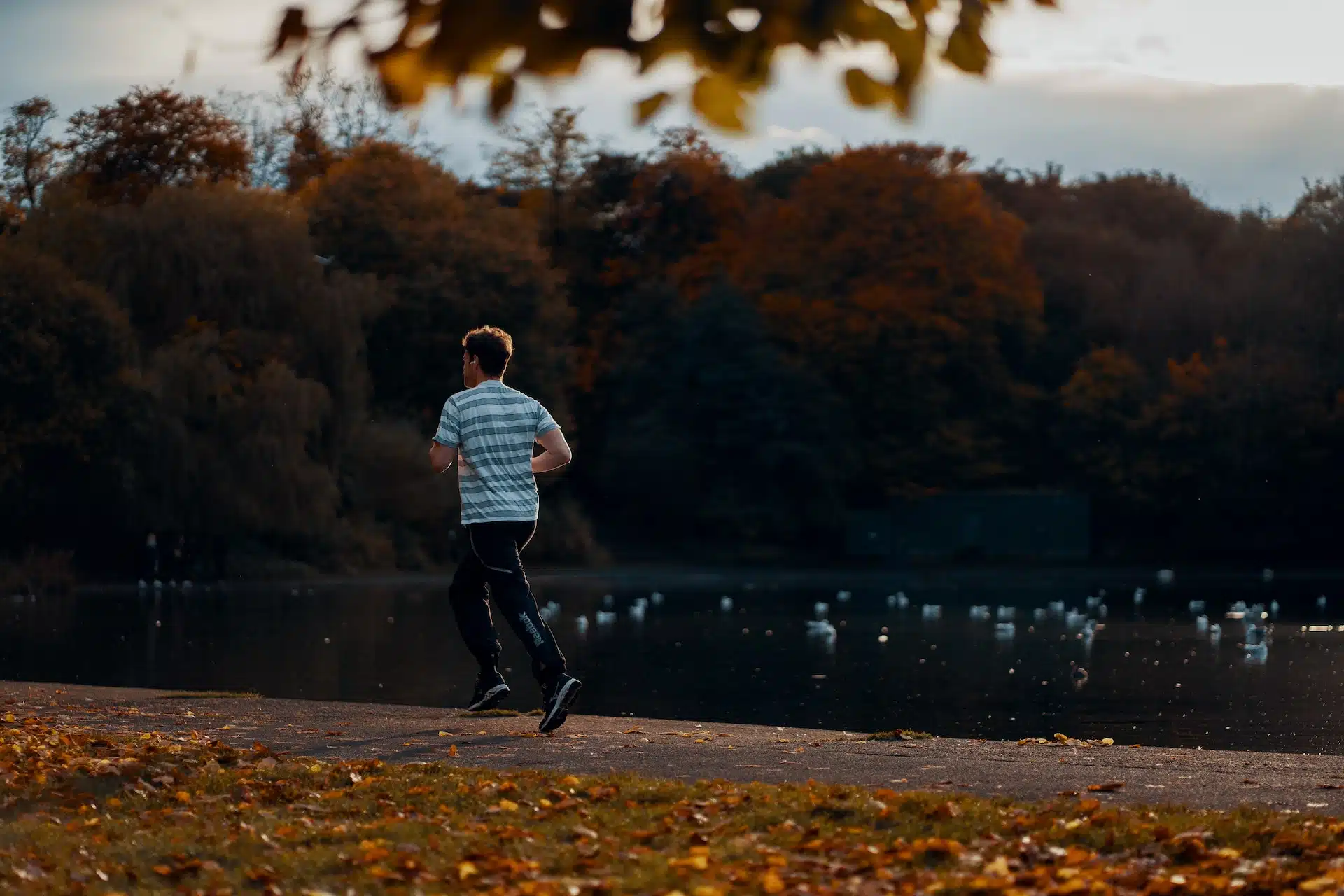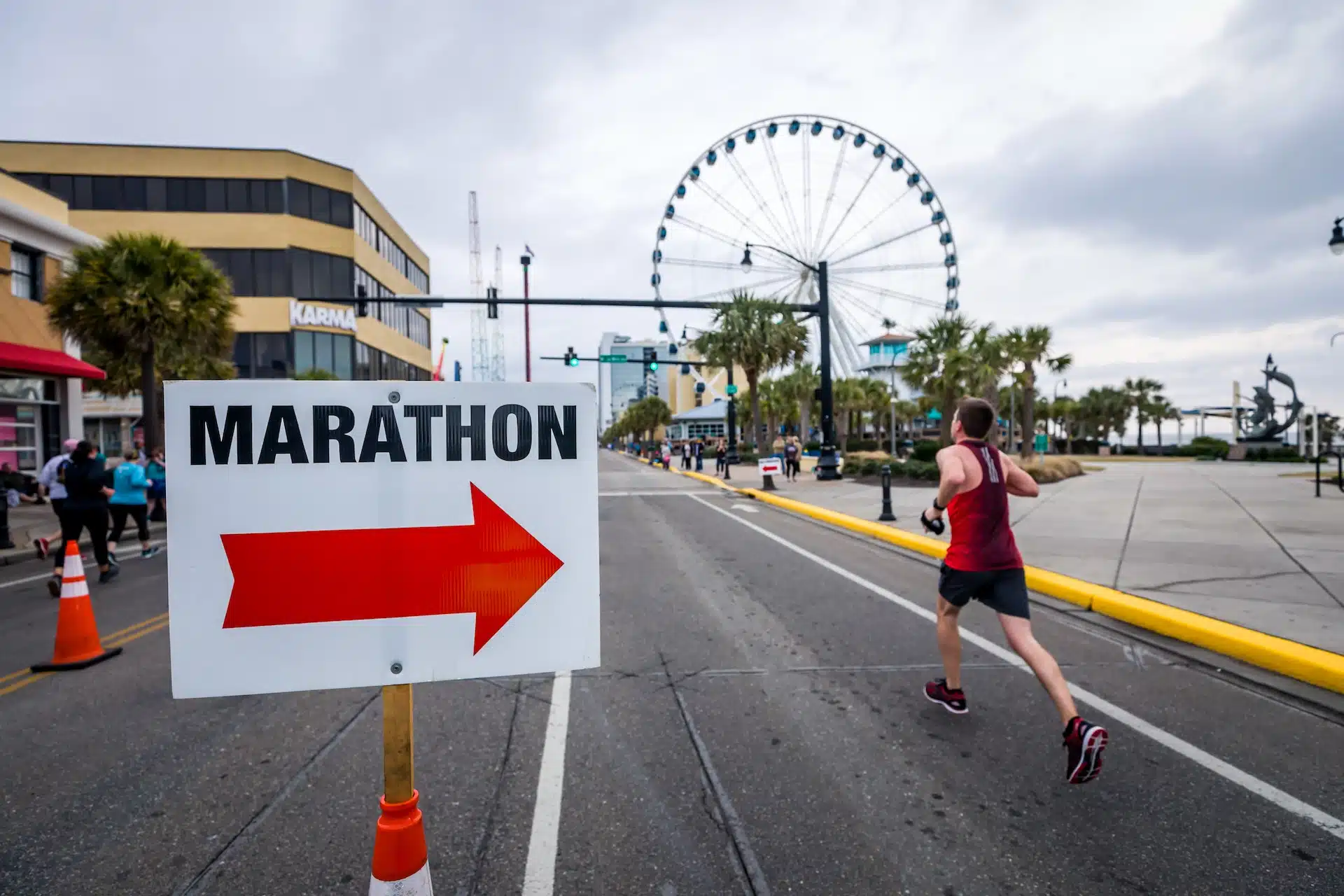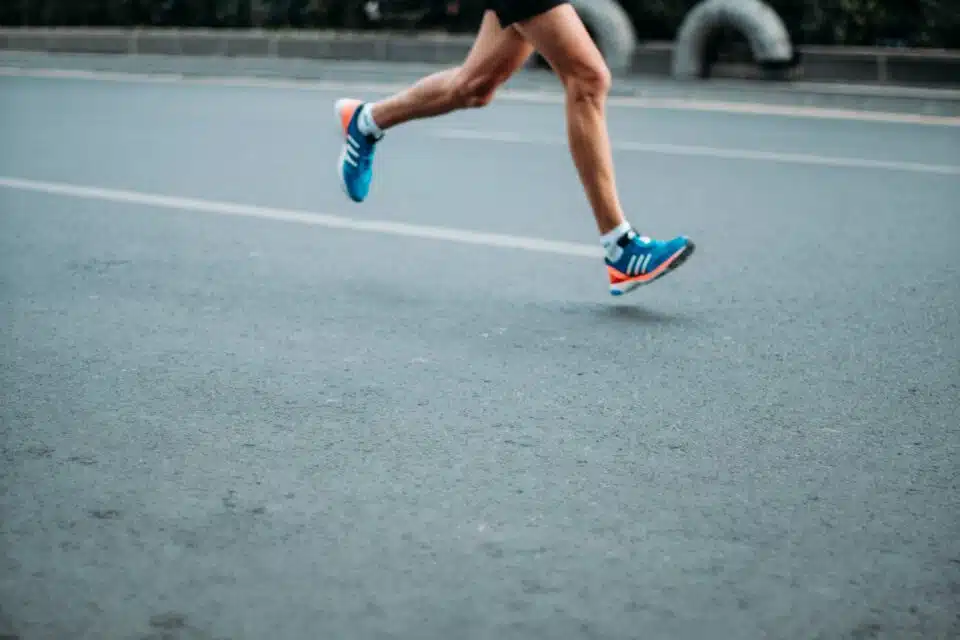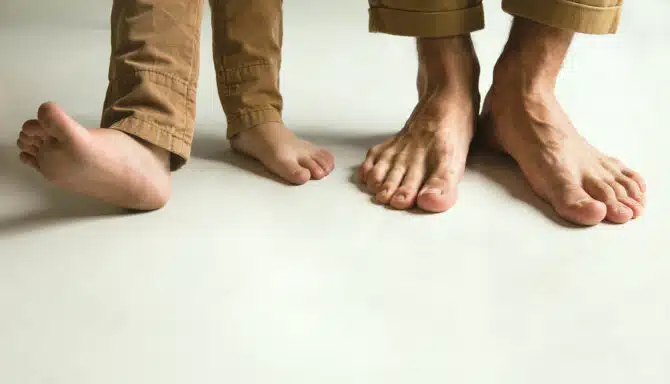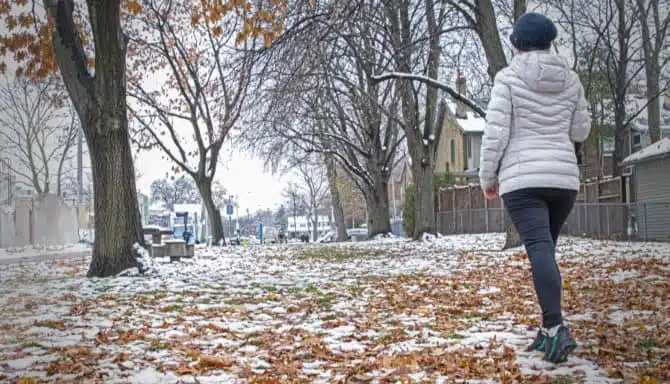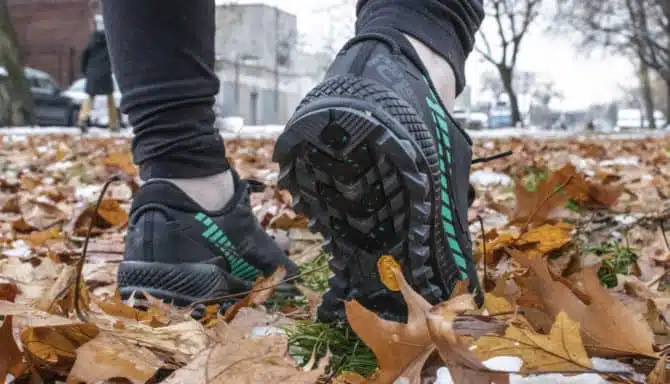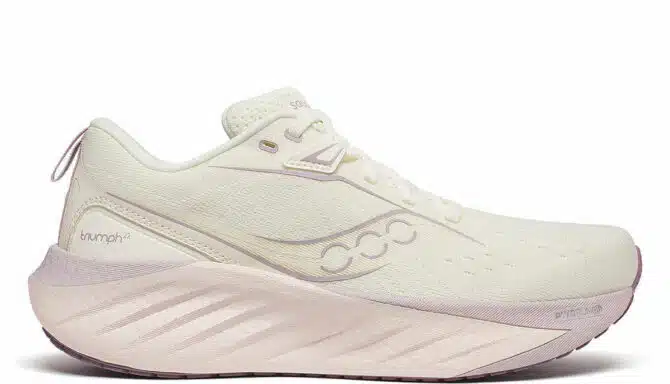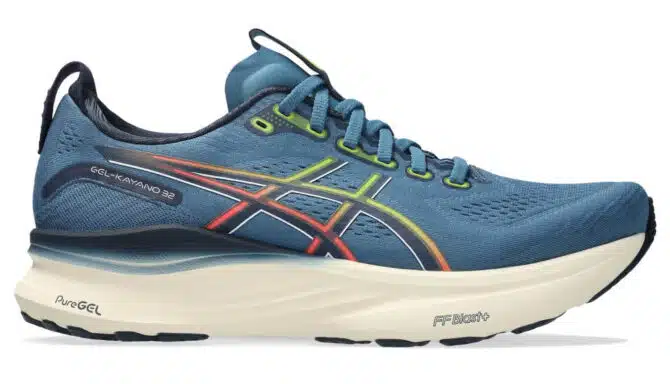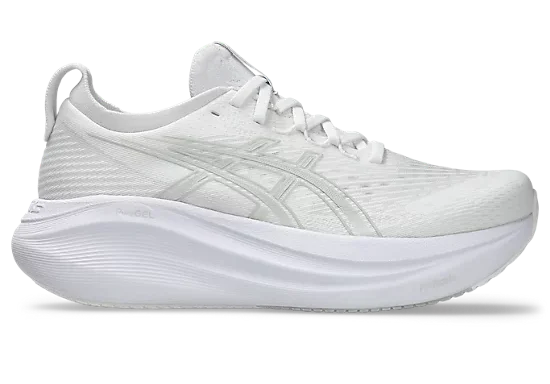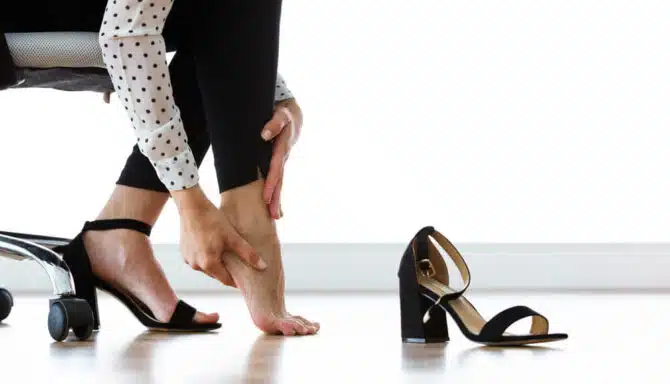December 17, 2021
What do you think of first when you think of winter? Is it cold? Snow? Ice? All the above?
Now, try running in all of the above. That's what winter throws at us every year, and we're tasked with properly preparing for it. It's important to dress for the season, and if you run outdoors in the winter, your number one asset is your footwear.
In this article, we'll cover how to choose the perfect pair of winter running shoes. This includes what to look for, common features, our picks, and best practices on finding the right pair for you.
Do you need special running shoes for winter?
Whether you need specific running shoes for winter depends on your climate and the conditions. Here in Toronto, the answer is yes. You should invest in winter running shoes because of the wind, snow, ice, cold temperatures, and salted roads. In this case, shoes with better traction, more insulation, and enhanced waterproofing will prepare you for all conditions.
If you experience conditions different from other times of year (i.e.: snow, ice, slush), then it's wise to have winter running shoes. If, however, you live in a climate where winter weather isn't much different than fall or spring (except for slightly cooler temperatures), then the answer might be no. You may be able to use all-season running shoes.
How do I choose running shoes for winter?
Choosing the perfect pair largely depends on the climate in which you live. Various parts of Canada have vastly different climates, so the needs of runners may differ from region to region. The best plan of action is to choose the conditions you'll face the most as you won't necessarily find one pair that's perfect for all conditions.
If you run in cold, wet conditions
If wet conditions are your primary concern, you'll want water-repellant shoes. Insulation is less of a concern, as you can opt for warm socks instead. Materials like GORE-TEX provide an outer membrane to your shoe and keep moisture out. Having removable insoles is also an advantage to help dry out shoes after each use.
If you run on roads or paved sidewalks
Roads and paved sidewalks are some of the less forgiving surfaces when it comes to running, as the ground has little to no give upon impact. You'll want well-cushioned shoes with thick lugs and reflective features as you'll likely be running in neighbourhoods and next to car traffic. Depending on the temperatures, thermal insulation is also a plus in colder climates. Waterproof shoes are less critical since most roads and sidewalks are plowed. That said, slush and snowmelt tend to accumulate along curbs and street corners, so a waterproof shoe will still be very useful when you’re crossing the street through slushy puddles.
If you run on snowy trails
Snowy trails can be either hard-packed or fresh powder. Regardless, you'll want a GORE-TEX or similar lining on your shoes, and even a gaiter (a covering to protect the ankle and lower leg) so the snow doesn't get into your shoes around your ankles. Thick but soft lugs for grip will suffice since surfaces will be soft, and durability is less of a concern than it would be on paved surfaces.
If you run on ice
It’s important to note that while certain treads and outsoles may provide more grip on slippery surfaces, no running shoe (or boot) on the market is recommended for running on ice (after all, they’re shoes; not ice skates). If you are brave enough to run on ice, you'll want either a shoe that puts traction first or even a shoe with a spiked outsole. For the best protection, we recommend using detachable spiked crampons that you can put on your running shoes when it’s slippery outside.
Also, where there's ice, it's cold, so look for well-insulated shoes to keep your feet warm.
Must-have winter shoe features
Waterproofing: Most brands create winter variations of their most popular running shoes. These account for wet conditions and use a GORE-TEX membrane or a proprietary equivalent that provides a layer of protection on the outside of the foot. GORE-TEX, as well as high-quality full-grain coated leather, is also very breathable, which will keep your feet dry and protected from both the weather and foot perspiration. Keeping your feet dry means avoiding common foot conditions like blisters, athlete's foot, and foot odour.
Insulation: Thermal insulation is a shoe's ability to trap your body heat while providing wind protection. Insulation is more common in hiking boots than running shoes, but pairing waterproof running shoes with thermal socks has the same effect.
Low light visibility: During the winter months, at least in Toronto, the sun rises after 7 a.m. and sets before 5 p.m., which means, more likely than not, you're going to be doing running in the dark. Reflective material helps in low light visibility and protects both yourself and others around you.
Low or high-top silhouette: If you're off-roading (literally) in the winter, you may want high-top footwear that prevents snow from getting into your shoes. Otherwise, a regular cut — almost every running shoe — is fine
Traction: Winter running shoes come with a rigid rubber outsole with thick and durable lugs. This helps maintain grip with the ground and acts similar to snow tires in the winter. If you’re running on snow or are worried about ice, you can also use add-ons, like crampons, ice cleats or Yaktrax.
It's important to note that – as mentioned earlier – no shoe on the market is built for ice.
How long do winter running shoes last?
Most running shoes last between 450-800 kilometres. That's because over time, the midsoles and insoles of shoes, comprising of EVA foam, break down, and don't offer the same level of support as they do when they’re new. Further, winter conditions play a part. EVA foam gets stiffer in the cold, which means the shoe has less give when your foot impacts the ground. Salted roads can also break down the outer material of the shoe, so make sure to give them a regular wash in the winter.
A good rule of thumb is to either check the cushioning on the shoe for wrinkles or to watch for signs of increased soreness after runs. Both these signs could indicate it's time for new shoes.
Tips for buying winter running shoes
Shop in the evening. Your feet swell as the day progresses, so you should visit the shoe store later in the day to get the most accurate sizing.
Check your size. As a starting point, use a sizing chart to get an idea of what size you would be based on your measurements. Ensure you try shoes on before purchasing and remember that some brands follow slightly varied sizing charts so there's not necessarily one "true" size.
Go up a half size, if necessary. If you're unsure of sizing, or of the socks you'll wear, get a half size up as it's easier to account for slightly larger shoes than those too small. Also, tight shoes in cold weather reduces circulation, which makes your feet cold – regardless of any insulating features.
Check the space around your toes. You should have some wiggle room around your toes to flex freely. Test for having roughly half a thumbprint worth of toe space between the toe box and your toes.
Try them on with running socks. Try on your shoes with the socks you plan on wearing. If you’re planning on wearing socks with different thicknesses, bring them all with you when you go shoe shopping.
Run around. If possible, test out the shoes in-store by walking or running for a brief moment. Better yet, some stores and clinics even have treadmills for test rides.
Top choices for winter 2022 running shoes
Saucony Peregrine 11 GTX
The Saucony Peregrine 11 ICE is a trail running shoe with a highly water-resistant upper to keep your feet dry in all conditions. What sets this shoe apart from the rest is its Vibram Arctic Grip Technology on the outsole, which provides excellent grip and traction on slippery conditions (hence why it’s called the “ICE”). This feature offers some of the best traction on the market for running shoes, short of using addons like crampons. Although it’s not GORE-TEX, the technology in the upper is still highly effective at keeping your feet dry in wet, slushy conditions and snow (They kept Erica’s feet completely dry in 3” of slush and snow when we took the photo above). But if GORE-TEX is a must for you, fear not: the Peregrine also comes in a GORE-TEX version without the Vibram (known as the Peregrine 11 GTX).
Features
Water-resistant and breathable upper
Vibram Arctic Grip Technology includes aggressive rubber lugs for extra traction on slippery surfaces
PWRRUN cushioning provides a responsive feel while a rock plate ensures additional protection for pushing uphill and driving downhill with confidence.
Best for: Trail running in rain, snow, slippery or muddy conditions.
Saucony Guide 14 RUNSHIELD
The Saucony Guide 14 RUNSHIELD is a weatherproof version of the Guide 14, one of the brand's best-selling and most popular shoes. The Guide 14 is a stability shoe for runners looking for better support around the arch area. It also comes in wide and regular width sizing depending on your preference. For more information about the Guide 14, check out our Saucony Running Shoe Guide (note: cute puppy does not come with the shoe).
Features
Water-resistant upper
Thermal backing on the tongue to keep you dry and warm
Reflective panels and bold colouring for increased visibility
Best for: Winter road running for those who overpronate and are looking for more rigid cushioning and support.
Saucony Excursion TR15 GTX
The Excursion TR15 Packs the necessities for a good time outdoors-essential cushioning, rugged traction, and durable protection-with a new streamlined look for wherever the trail takes you.
Winter features
Grippy lugs on the outsole are made with carbon rubber for rock-solid footing.
The trail-specific mesh with supportive overlays locks your foot into place and protects you from debris without looking or feeling bulky.
Best for: Everyday use on snowy roads or in slushy conditions.
ASICS GT-1000 8 GTX
The GT-1000™ 8 G-TX is a lightweight stability trainer with winter features like a rigid outsole and a GORE-TEX upper, making it a great option for winter running. It is the winterized companion to the GT-1000, one of ASICS’ most popular stability running shoes. While many trail shoes tend to focus more on grip and weather-proofing features at the expense of supportive features, the GT-1000 8 G-TX stands apart by also providing substantial arch support and stability features for runners who overpronate, have flat feet, or require extra control to keep their feet and ankles aligned when they run. It does all this while giving you the freedom of movement you need to hit your top speed.
(For more information on ASICS’ GT-1000 line, check out our ASICS guide.)
Winter features
GORE-TEX upper
Snow rubber outsole
Durable lugs
Best for: An all-around winter shoe that is versatile across both dry and wet conditions, from the trail to the road. Additionally, it is one of the few stability winter running shoes on the market for runners in need of additional support and stability features.
ASICS Gel-Cumulus 23 AWL
The ASICS Gel-Cumulus 23 AWL (or Gel-Cumulus 23 Winterized) is the winterized version of the Gel Cumulus. It is a lightweight high-mileage trainer meaning it's designed for longer runs in variable conditions thanks to its water-repellent upper. The Gel-Cumulus is a neutral shoe with standard cushioning, and no motion control (stability) features.
(To learn more about the Gel Cumulus, check out our ASICS guide.)
Winter features
Reflective accents improve visibility in low-light conditions
The water-resistant upper helps repel water and keep feet dry
The toggle speed lacing system makes the shoe easier to take on and off
Winter-specific outsole that features snow rubber and a lug configuration that provides better grip in cold and wet conditions.
Best for: Winter road running for longer distances and for those who enjoy a softer, cushioned feel.
ASICS Fujitribuca Max
The ASICS Fujitribuca Max is designed for off-road running in all conditions including wet trails and hard-packed snow.
Winter features
Uphill and download lug pattern for running uphill and downhill
Rubber outsole for wet and slippery conditions
Gaiter system
Breathable upper, but no GORE-TEX outer liner
Best for: Off-road winter running (ideally hard-packed snow or wet trails) on hilly terrain.

